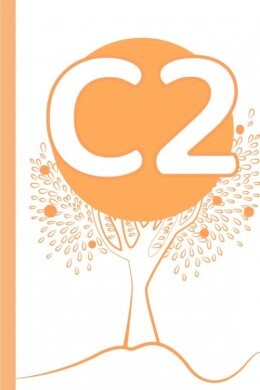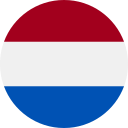C2 Woordenlijst - Biology
Hier leer je alle essentiële woorden om over biologie te praten, speciaal verzameld voor C2-niveau leerlingen.
Herzien
Flashcards
Spelling
Quiz

a tiny structure within cells that assembles proteins by reading the genetic instructions carried by messenger RNA

ribosoom
a cellular organelle involved in the processing, packaging, and distribution of proteins and lipids within the cell, consisting of a stack of flattened membrane sacs called cisternae

Golgi-apparaat, Golgi-complex
a small, enzyme-filled sac in a cell that breaks down waste materials and unwanted substances

lysosoom, enzymgevuld blaasje
an organelle that is abundantly present in most cells and is responsible for energy production

mitochondrion, energieproducerend organel
a plant cell organelle that uses sunlight to produce energy and make glucose through photosynthesis

chloroplast, fotosynthetisch organel
a molecule that forms the basic building block of DNA and RNA, consisting of a sugar, a phosphate group, and a nitrogenous base

nucleotide
a linear chain of amino acids linked by peptide bonds, forming a primary structure of a protein

polypeptide, polypeptideketen
a specialized, membrane-bound structure within a cell that performs specific functions, contributing to the cell's overall structure and function

organel, celorganel
a cell organelle in plants, fungi, and some protists that stores nutrients, manages waste, and helps maintain cell pressure

vacuole, vesikel
a pair of small cylinders near the nucleus in animal cells, organizing cell division by forming the mitotic spindle

centriole, paar centriolen
a type of protein that plays a structural role in the packaging of DNA into nucleosomes, fundamental units of chromatin

histon, histon eiwit
a repetitive DNA sequence at the end of a linear chromosome, protecting it from deterioration during replication, and playing a role in cellular aging and cancer development

telomeer, chromosoomuiteinde
the observable physical and behavioral characteristics of an organism, resulting from the interaction of its genotype (genetic makeup) with the environment

fenotype, waarneembare kenmerken
the tendency of an organism or cell to regulate its internal environment and maintain a stable, balanced condition, despite external changes

homeostase, intern evenwicht
the process by which the information encoded in the sequence of nucleotides in DNA is converted into a functional product, typically a protein

translatie, genetische translatie
the process by which a segment of DNA is used as a template to synthesize a complementary RNA molecule

transcriptie, het transcriptieproces
the process by which an organism duplicates its genetic material, particularly the copying of DNA in cell division

replicatie
a sequence of three adjacent nucleotides in mRNA that codes for a specific amino acid during protein synthesis or serves as a start or stop signal in the translation process

codon, codonsequentie
a close and often long-term interaction between two different species living in close physical association, typically to the advantage of both

symbiose, symbiotische relatie
a single-celled, microscopic organism belonging to the group of protozoa, characterized by a flexible cell membrane and the absence of a fixed body shape

amoebe, amoeben
a simple, single-celled organism that lacks a true nucleus and membrane-bound organelles, such as bacteria and archaea

prokaryoot, prokaryotisch organisme
a green pigment found in all green plants and cyanobacteria that is responsible for the absorption of the sunlight needed for the photosynthesis process

chlorofyl, groen pigment
the protein coat of a virus that encases its genetic material and helps it attach to and enter host cells during infection

het capsid, de eiwitmantel
a type of living thing with cells that have a nucleus and other structures enclosed in membranes, like plants, animals, fungi, and some microorganisms

eukaryoot, eukaryotisch organisme
a mature, female reproductive cell or egg, typically larger than a sperm cell, capable of fusing with a sperm cell during fertilization to form a zygote

eicel, ei
an enzyme produced in the stomach that helps in the digestion of proteins by breaking them down into smaller peptides

pepsine, eiwitsplitsend enzym
a molecule that carries energy within cells, composed of adenine, a ribose sugar, and three phosphate groups

adenosinetrifosfaat, trifosfaat van adenosine
a gas, especially methane, that is produced as a result of the decomposition of animal or plant remains, which is used as fuel

biogas, hernieuwbaar gas
a network of protein fibers in a cell that gives it shape, supports its structure, and aids in movement

cytoskelet, celskelet
| C2 Woordenlijst |
|---|